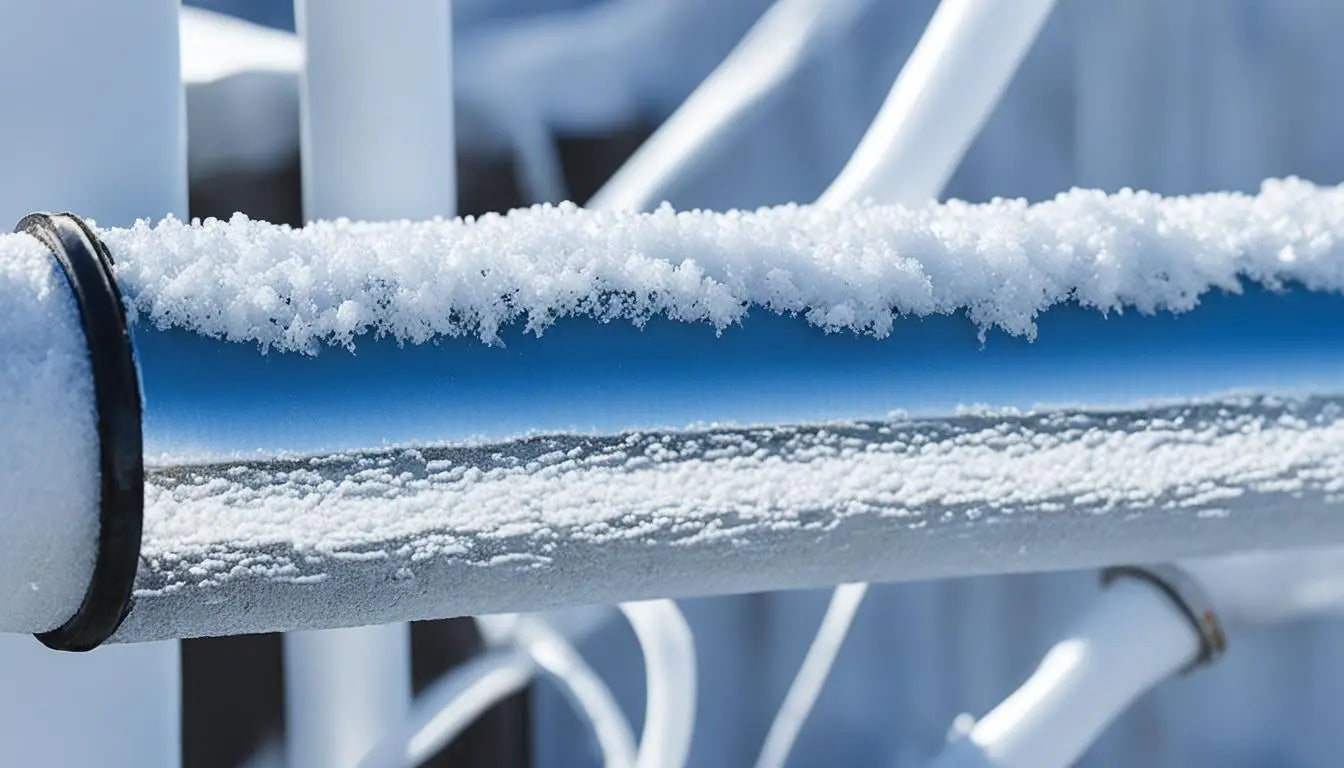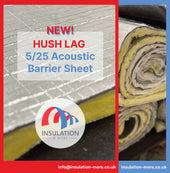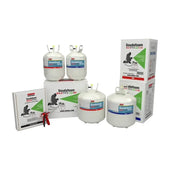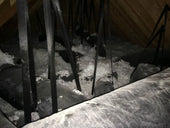Wondering what insulation keeps pipes cold? As a facility manager or engineer, ensuring chilled water systems operate optimally is crucial. With many insulation materials for cold pipes available, choosing the best is key.
For pipe insulation for cold temperatures, consider thermal conductivity, moisture resistance, and piping system compatibility. We'll explore best insulation for chilled water pipes and insights on insulating pipes to prevent condensation.
This will help you make informed decisions about your facility's cold pipe insulation options.
Understanding the Importance of Insulating Cold Pipes
Insulating cold pipes is crucial. It maintains optimal performance and efficiency in chilled water systems. Proper insulation prevents condensation, moisture buildup. It ensures chilled water stays at desired temperature.
Insulation minimises heat gain, controls moisture. It protects pipes from corrosion, mould growth, reduced effectiveness.
Preventing Condensation and Moisture Buildup
Cold pipe insulation prevents condensation, moisture buildup. Uninsulated pipes exposed to warm, humid air face condensation.
Moisture control avoids issues like:
Materials like polyethylene foam, closed-cell elastomeric foam prevent condensation. They have low thermal conductivity, excellent vapour barrier properties.
Maintaining Optimal Temperature for Chilled Water Systems
Insulating cold pipes maintains optimal chilled water temperature. Chilled water is 4°C to 7°C for effective cooling.
Proper insulation minimises heat gain. It ensures chilled water stays at desired temperature.
Benefits of maintaining optimal temperature:
- Improved energy efficiency
- Reduced cooling load on chillers
- Consistent cooling performance
- Extended equipment life
Select appropriate insulation material, thickness based on pipe size, temperature, ambient conditions. Common materials: polyethylene foam, phenolic foam, cellular glass.
"Insulating cold pipes ensures longevity, reliability of chilled water system." - Sarah Thompson, Insulation Specialist
Proper installation techniques maximise insulation effectiveness. Ensure tight-fitting joints, sealed seams, edges. Protect insulation from mechanical damage.
Types of Insulation Materials for Cold Pipes
Choosing the right insulation material is crucial for cold pipes. It maintains optimal temperature, prevents condensation, and ensures energy efficiency.
Various insulation materials are available, each with unique properties and advantages.
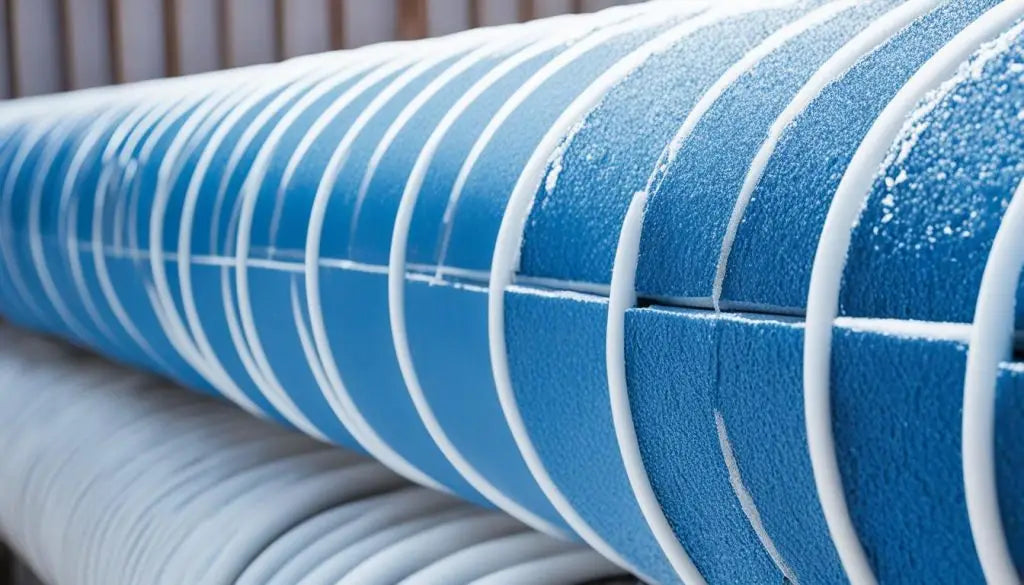
Polyethylene Foam: Lightweight and Moisture-Resistant
Polyethylene foam insulation is lightweight and moisture-resistant for cold pipes. Its closed-cell structure provides excellent thermal insulation.
It prevents moisture penetration, ideal for chilled water systems. Polyethylene foam is easy to install.
Its flexibility allows a snug fit, ensuring optimal insulation performance.
Elastomeric Foam: Flexible and Durable
Elastomeric foam insulation offers flexibility and durability for cold pipes. Its elastomeric properties conform to contours.
It provides a tight seal against moisture and air infiltration. Elastomeric foam withstands UV, ozone, and weathering.
Suitable for indoor and outdoor applications, its closed-cell structure minimises heat gain.
Fibreglass: Cost-Effective and Fire-Resistant
Fibreglass pipe insulation is cost-effective for insulating cold pipes. It offers good thermal insulation and fire resistance.
For cold pipes, ensure a proper vapour barrier to prevent moisture absorption. Fibreglass insulation is available pre-formed or in rolls.
Easy to install on straight runs and fittings.
| Insulation Material | Key Properties | Advantages |
|---|---|---|
| Polyethylene Foam | Lightweight, moisture-resistant, closed-cell structure | Easy installation, conformity to pipe contours, excellent thermal insulation |
| Elastomeric Foam | Flexible, durable, UV and weathering resistant | Tight seal against moisture and air, suitable for indoor and outdoor use |
| Fibreglass | Cost-effective, fire-resistant, good thermal insulation | Easy installation on straight runs and fittings, suitable for fire safety concerns |
When selecting insulation for cold pipes, consider thermal conductivity, moisture resistance, flexibility, and operating temperature range compatibility.
Proper installation and maintenance practices ensure long-term performance and effectiveness.
Understanding properties and advantages helps make informed decisions when insulating cold piping systems.
Factors to Consider When Choosing Cold Pipe Insulation
When selecting insulation for cold pipes, several critical factors ensure effective temperature maintenance, condensation prevention, and long-lasting performance.
Thermal Conductivity and R-Value
Thermal conductivity measures how easily heat transfers through a material. R-value indicates the insulation's resistance to heat flow.
For cold pipes, opt for materials with low thermal conductivity and high R-values. Polyethylene foam and elastomeric foam are excellent choices.
Moisture Resistance and Vapour Barrier
Moisture resistance is crucial, as condensation reduces insulation effectiveness, causes corrosion, and promotes mould growth.
Choose materials with inherent moisture resistance or equipped with a vapour barrier. Elastomeric foam insulation like nitrile rubber offers excellent moisture resistance.
Ensure the vapour barrier is compatible with the insulation material and operating temperature range.
Temperature Range and Compatibility
Cold pipe insulation must be compatible with the piping system's operating temperature range.
Different insulation materials have varying temperature limits. Consult manufacturer specifications for your specific temperature range.
Elastomeric foam insulation is suitable for temperatures from -50°C to 105°C.
Ease of Installation and Maintenance
Consider materials easy to cut, shape, and install, like flexible elastomeric foam or pre-slit polyethylene foam.
Choose durable, damage-resistant materials that are easy to repair or replace.
Regular inspections and maintenance can extend the life of your cold pipe insulation.
| Factor | Importance |
|---|---|
| Thermal Conductivity and R-Value | Minimises heat gain and maintains optimal temperatures |
| Moisture Resistance and Vapour Barrier | Prevents condensation, corrosion, and mould growth |
| Temperature Range and Compatibility | Ensures optimal performance and longevity |
| Ease of Installation and Maintenance | Reduces installation time and costs, extends insulation life |
By carefully considering these factors, you can ensure optimal performance, energy efficiency, and long-term reliability for your cold piping system.
What Insulation Keeps Pipe Cold: Best Practices for Installation
Proper insulation thickness is crucial for maintaining desired temperature and preventing condensation.
Thickness depends on pipe size, operating temperature, and ambient conditions.
Install insulation with tight-fitting joints, sealed using appropriate adhesives or tapes.
Sealing prevents air and moisture infiltration, ensuring insulation performance.
Insulate straight pipe runs, fittings, valves, and components for consistent temperature.
Neglecting component insulation leads to cold spots and reduced efficiency.
Anchor insulation securely to prevent sagging or displacement over time.
Use adhesive strips, wire ties, or specialised insulation hangers.
"Proper installation is the foundation of an effective cold pipe insulation system. By following best practices, such as selecting the appropriate insulation thickness, sealing joints properly, ensuring comprehensive coverage, and securely anchoring the insulation, you can achieve optimal performance and long-term reliability."
Enhance insulation effectiveness with these techniques:
- Stagger insulation joints to minimise heat loss
- Use vapour barriers to prevent moisture migration
- Apply insulation in multiple layers for improved thermal performance
- Ensure proper insulation support and avoid compression
| Pipe Size (mm) | Operating Temperature (°C) | Recommended Insulation Thickness (mm) |
|---|---|---|
| 25 | 5 | 25 |
| 50 | 5 | 38 |
| 100 | 5 | 50 |
| 150 | 5 | 63 |
Adhering to best practices ensures efficient chilling and condensation prevention.
Proper installation yields long-term performance, durability, and cost-effectiveness benefits.
Maintenance and Troubleshooting for Cold Pipe Insulation Systems
Regular maintenance and troubleshooting are vital. Conduct periodic insulation inspections and repairs. This helps identify and address issues before escalation.
Look out for condensation on cold pipes due to inadequate insulation coverage or vapour barrier failure. Also, watch for ice formation caused by insufficient insulation thickness or cold spots.
If you notice damaged insulation, replace or repair those sections promptly. Small areas of damaged insulation can compromise performance and lead to costly energy losses or moisture-related problems.
When troubleshooting, pay attention to areas prone to physical damage, like pipe hangers, supports, and high-traffic zones.
Establish a regular maintenance schedule. Include tasks like cleaning insulation surfaces, checking for moisture intrusion, and assessing overall insulation and vapour barrier condition.
Routine maintenance and prompt issue addressing significantly extend the lifespan of your cold pipe insulation system. Optimal performance is ensured for years.

